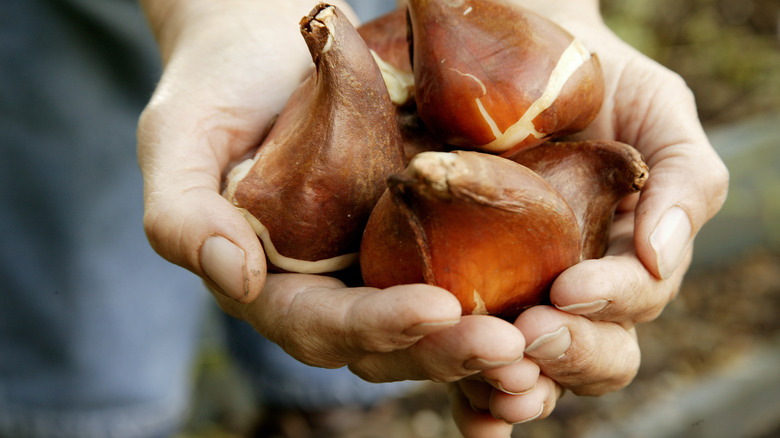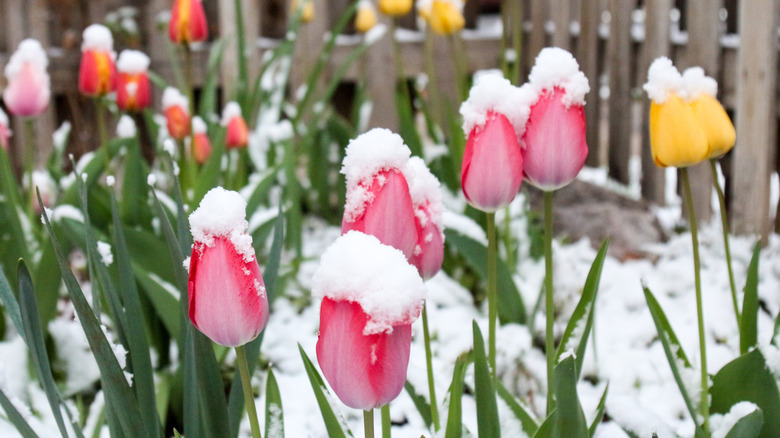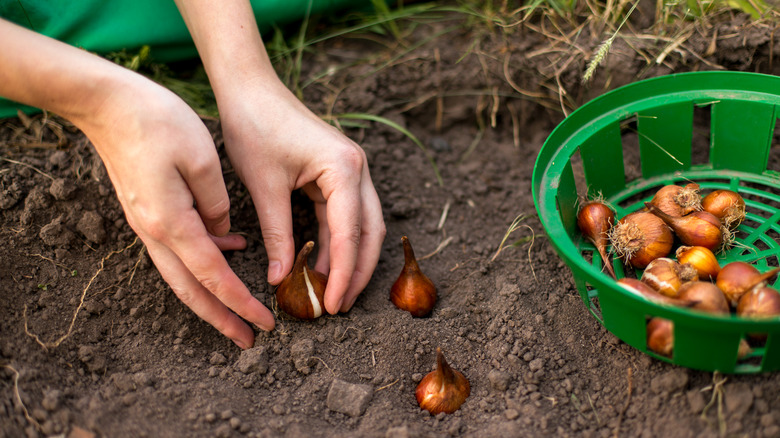Can You Plant Tulips In The Spring? Our Professional Gardener Weighs In
Many a gardener has had this experience. You're sorting through your gardening supplies or cleaning your garden shed to get ready for the spring season, and there they are, the tulip bulbs you forgot to plant last fall! Can they be saved? Should you toss them out? Can you plant tulip bulbs in the spring? The answer is yes, you can plant tulip bulbs in the spring, but you should be prepared for a possibly disappointing outcome.
If your tulip bulbs have lasted the winter and feel solid (not soft and mushy or dry and crumbly), they can still be planted. You may even notice some signs of new green growth happening. This is a good sign that the bulbs are still viable.
But even though the bulbs have some growth happening, this may not be a guarantee that you'll get flowers. No gardener wants to waste the opportunity to grow beautiful tulips, but sometimes bulbs don't go into the ground during the best time of year to plant them. That's when you have to decide if you want to take a chance planting them in the spring.
Tulips need cold to bloom
If it's still early spring and the ground is workable, you can try planting your tulip bulbs and hope for the best. If the bulbs were kept in a fairly cold place and didn't freeze but also weren't at indoor heated temperatures, they may have gotten enough cold exposure to still be viable. Tulips need a certain amount of time spent in cold temperatures to be able to germinate growth in spring; this is referred to as vernalization.
Depending on the variety, tulips have different blooming times. A later-blooming variety might perform better if planted early in spring while temperatures are still cool. Earlier flowering ones may not fare as well, unless you're in a colder growing zone, like USDA 5 or lower. The earliest tulips to bloom are Single Early, Double Early, and Emperor (also known as Fosteriana) tulips, which produce flowers in early to mid-April. Later blooming varieties include Darwin Hybrids, Triumph tulips, Lily Flowering tulips, and Single Late tulips.
If you're new to planting tulip bulbs and not sure what kind you have, embrace your sense of adventure and plant them! The only way to know for sure if they will bloom is to plant them and see what happens. You may be pleasantly surprised to find you have some glorious perennial tulips. If they don't bloom the first time, wait a year to see if the bulbs will regenerate their bloom capacity after a year in proper temperatures.
Other planting options for tulips
If it's past early spring and you're nervous about planting those tulip bulbs, you could wait and plant them in the fall to see if they come up the following spring. But, if they're not perennial tulips, this may not result in flowers. The tulip types most likely to perennialize (return every year) include species tulips (shorter tulips with smaller blooms), Darwin Hybrids, and Emperor tulips. These varieties do best in growing zones with colder winters, USDA Zone 6 or lower.
Tulip bulbs that have been planted in one place for more than one season will sometimes put out green leaves in spring, but not flowers. Many varieties of tulips only bloom once. This limitation may have contributed to the tulip craze in 17th-century Holland. Their value was inflated due to a sense of rarity and the brief, fleeting bloom time. You probably didn't pay nearly as much, but tulip time in spring still feels precious beyond measure to many flower lovers.
If you're in a warmer zone, you may want to force the bulbs indoors. Forcing bulbs is common in the floral industry to create spring flowers for holidays like Easter and Mother's Day. It's fairly easy to do at home. After forcing blooms, most spring flowering bulbs are usually discarded, as most won't bloom again if planted outdoors. Whichever method you choose, it's certainly worth a try to plant your tulip bulbs so they don't go to waste. You may be surprised to find they still have life left in them.



